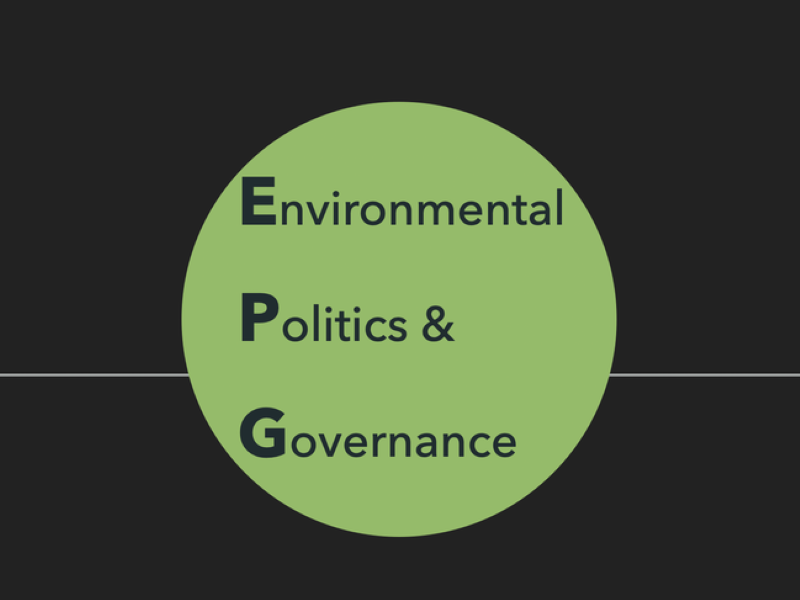 EPG online seminar series
EPG online seminar series
Environmental Politics and Governance (EPG) Online seminar series at the Department of Social Policy, LSE.
If you want to keep up to date with the latest information from the EPG Online network, please join our mailing list.
For any questions related to the seminar series, please email the academic organiser Dr Liam Beiser-McGrath.
2024/25 series
Thursday 10th October, 4.30pm-5.30pm, OLD 2.21
Greening Criminal Records: How Emission Reduction Commitments Mitigate Corporate Scandals
Lorenzo Crippa (University of Glasgow) and Dafni Kalatzi Pantera (University of Birmingham)
Investigating the role of foundations in environmental city networks
Marielle Papin (MacEwan University)
Thursday 24th October, 4.30pm-5.30pm, OLD 2.21
Does Warm Weather Cool Voters Down? How Temperature Fluctuations Impact Voting and Climate Concerns
Maria Cotofan (King's College London) Karly Kuralbayeva (King's College London), and Konstantinos Matakos (King's College London and Harvard)
Measuring Climate Change Salience in Political Manifestos: A Computational Text Analysis Approach
Mary Sanford (RFF-CMCC European Institute on Economics and the Environment)
Thursday 7th November, 4.30pm-5.30pm, OLD 2.21
Cost, Risk, and Threat: The Material & Contextual Factors Driving Climate Policy Preferences
Max Bradley (EUI)
More than Symbols : The Effect of Symbolic Policies on Climate Policy Support
Théodore Tallent (Sciences Po), Malo Jan (Sciences Po), and Luis Sattelmayer (Sciences Po)
Thursday 21st November, 4.30pm-5.30pm, OLD 2.21
Towards an environmental welfare state? Protecting populations against environmental risks and disasters in the age of the climate crisis.
Lydie Cabane (Leiden University) and Anne Laure Beaussier (Sciences Po)
The Role of Social Protection for a Just Transition in Developing and Emerging Economies
Katrin Gasior (Southern African Social Policy Research Insights)
Thursday 5th December, 4.30pm-5.30pm, OLD 2.21
Climate Change, Political Conflict, and Democratic Resilience
Austin Beacham (Georgia Institue of Technology), Christina J. Schneider (UCSD), and Emilie M. Hafner-Burton (UCSD)
Chasing the Sun: The Political Economy of Solar Industry Investment in the Global South
Ishana Ratan (UC Berkeley)